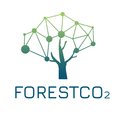ForestCO2 project
by OSGL LabMay 1, 2023
All news, Projects

EO and in-situ based information framework to support generating Carbon Credits in forestry
The overall objective of the ForestCO2 project is to develop methodologies and produce a set of geospatial information mostly by using Earth Observation data and machine learning algorithms, that will support Carbon Credit projects based on afforestation. This will enable boosting afforestation projects that will result in the decrease of carbon footprint, capture CO2 in biomass and soil and creation of new economic models. The results would support information-driven decisions in forestry management, increase the profitability of the forestry sector and significantly remove carbon from the atmosphere.
ForestCO2 project aims at leveraging free and open data from the Copernicus missions, together with soil observations, ground truth (in-situ) observations from forest inventory as well as the available other data like meteorological, climate, land use, land cover data and similar. Such a huge amount of freely available data allowed for the design of advanced machine learning techniques able to leverage both the spatial and temporal features of the available data thus providing the reliable information necessary for making the right decision at the right time. The main focus of this project will be related to forest monitoring aiming to support Carbon credit projects, including: finding optimal sites for afforestation projects, providing information for applicability for Carbon credit projects, supporting Monitoring Reporting Verification (MRV) process, soil organic carbon modeling and measuring.
The products designed to fit the requirements of Carbon Credits methodologies will include: suitable locations for afforestation, forest biomass, wetlands data, forest degradation from fires, disease, or cutting, optimal locations for soil sampling and Soil Organic Carbon (SOC) estimation from soil spectroscopy. The products will significantly facilitate Carbon Credit projects implementation and make afforestation economically viable. To train the robust models, comprehensive in situ data on forest biomass, forest disturbances, and SOC content will be used, either from available sources or collected within the scope of the ForestCO2 project.